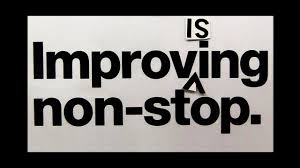Emotional agility is a tremendous asset in understanding and influencing others. Great leaders should have the ability to manage their thoughts and feelings. We all have a river of endless thought and emotion flowing through us – there is simply no moment ever, where we find ourselves not having a thought or experiencing an emotion. Managing this flow or nurturing emotional agility is a key attribute of successful leaders.
This never ending inner monologue is composed of all the fundamental emotions, their various deriviatives and a huge menu of contrary thoughts. It took millions of years to create this sophisticated computer system and all these signals are there to support the will to survive – to anticipate issues in advance, adjust in a nano beat our action to suit changing circumstance and ultimately to avoid danger.
Can We Control Our Thoughts & Feelings?
Yet it is impossible to truly control these thoughts and emotions regardless of what many psychologists, kung fu masters or even method actors would possibly have us believe. If we could control our emotions, well we would have nailed it – we would know happiness or euphoria all day, every day. Depression, anxiety and stress would be things of the past and giant pharma conglomerates would have nothing to sell that anyone would want or need.
We don’t fundamentally change who we are in the workplace – some may alter their external behaviour more than others but this repackaging aside, we largely remain ourselves with the same thoughts, emotions, values, actions, reactions, preferences… and so on. In fact with tough deadlines, ambition, competition, limited resources etc all very evident, the workplace is for many a far more pressurised environment where one’s behaviours, based on thought and emotion, become very obvious.
Self-Awareness & Acknowledging Emotions
Picture a manager in an office who routinely becomes angry and screams and belittles his team when a piece of seemingly inadequate work is submitted. Repeated anger when faced with certain trigger points has embedded this behaviour to the point of reflex. This manager could become far more effective, for himself and others, if he could acknowledge the thoughts and emotions that occur, recognise patterns of embedded behaviour, make a conscious decision to accept those thoughts and emotions and then make a conscious decision to behave differently. A clear case of a manager who utterly lacks emotional agility.
Self awareness needs time and space to develop and our manager desperately needs to make that time and space. Only from quiet can come introspection and awareness of the self – the reason there are so many closed eyes exercises in yoga is to take focus deep within oneself. And to some extent he needs to realise that he is stuck in a pattern of behaviour himself. 360 degree feedbacks are well and good but our manager needs to have that realisation for himself if he is ever to willingly make changes.
Pausing, Re-Labelling, Reframing…
Then he needs to be willing to take a giant pause the next time a trigger point takes him to his routine expression of immediate anger. Pause literally for a minute or two and focus on the thoughts and feelings that he is experiencing. It is vital to acknowledge that these thoughts and feelings are taking place. This acknowledging is the basis of mindfulness or meditation and the start point to consciously develop emotional agility.
Equally vital is that he re-labels the thought “my stupid team have screwed up again..” into “I’m having the thought that my stupid team have screwed up again..” Simple but very necessary in creating a little distance between the thought and emotion on one side and the reaction on the other. This re-labelling will allow him to see that these thoughts and emotions are transient. He then needs to accept that they occurred and that he experienced them without any sense of judgement of himself or the team.
Nurture Emotional Agility…
Have the thought, acknowledge that you had the thought, accept the thought and then let the thought leave as freely as it arrived. In doing so our manager would now be able to make a choice in how he behaves, reacts and expresses himself, a choice which hitherto was not available. That is the stuff of emotional agility and of real leadership.
Sartaj Garewal is the founder of Dynamic Presenting – a creative, leadership development consultancy, adapting theatre training to create leadership programs for business.
Dynamic Presenting – Enabling Powerful Communication









